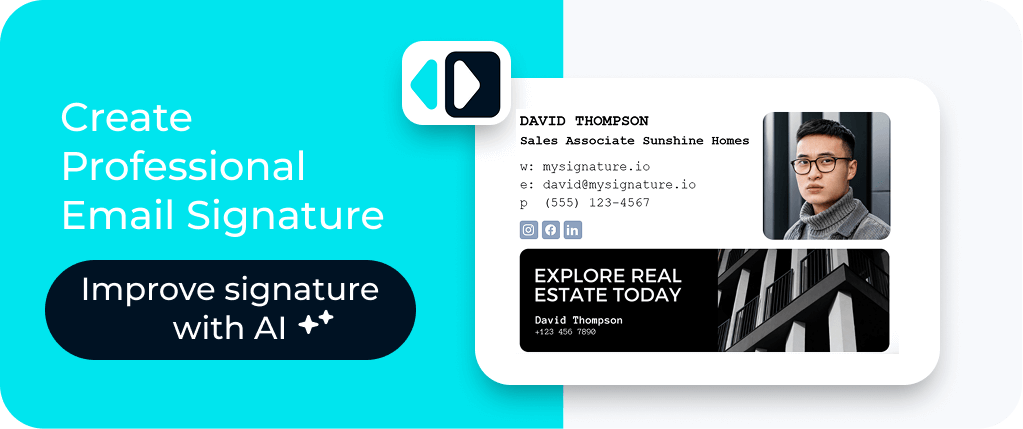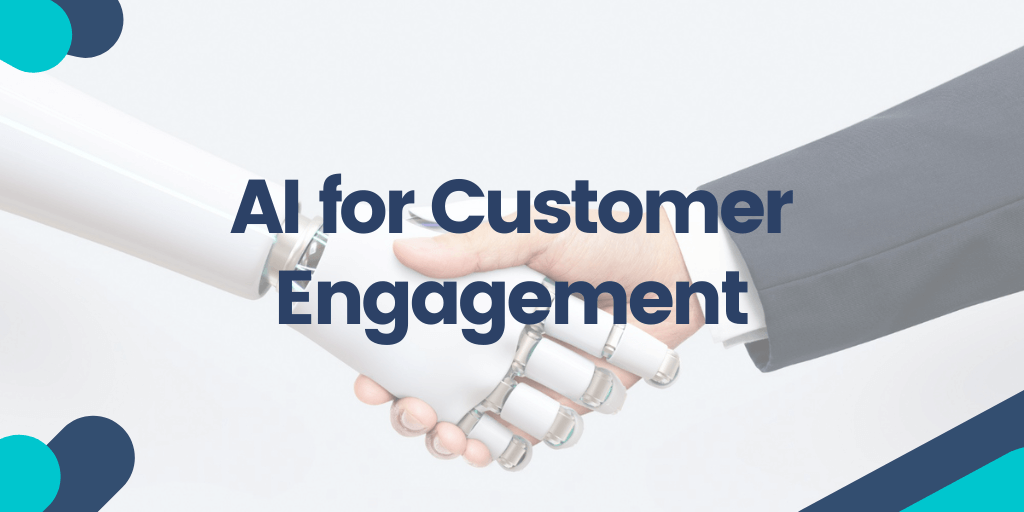A customer receives an email from your business — it’s well-written, professional, and the signature at the bottom catches their eye. There’s your logo, a call-to-action, maybe even a banner inviting them to “Get a quote” or “Book a demo.” They click.
Now they’re on your website, ready to engage — but no one’s there to greet them. The page sits still. The moment of interest fades, and the visitor drifts away.
This is where most businesses lose engagement — right after the click.
Whether you're emailing existing customers, nurturing prospects, or reaching out to new contacts, every email is an opportunity. But not every click represents the same level of intent or readiness. That's where AI for customer engagement changes the game.
With conversational AI tools, companies can connect email signatures and website interactions into one seamless experience — turning static clicks into qualified conversations that reveal what the visitor actually needs and how urgently.
It's no surprise that 84% of customer service professionals now consider AI essential to staying competitive.
AI is no longer just for support. It’s the invisible bridge between marketing, sales, and service — the technology that transforms a casual email interaction into a meaningful, lasting connection.
Contents:
- Deploy AI agents for 24/7 engagement
- AI-driven hyper-personalization (from email click to conversation)
- Replace static forms with conversationad AI
- Measuring the ROI of AI customer engagement
- Challenges and best practices for AI customer engagement
Deploy AI agents for 24/7 engagement
Customers expect immediacy. Whether they’re exploring your services at 10 a.m. or midnight, they want information now. With AI chatbots for customer engagement, your website can keep up — greeting every visitor instantly, day or night.
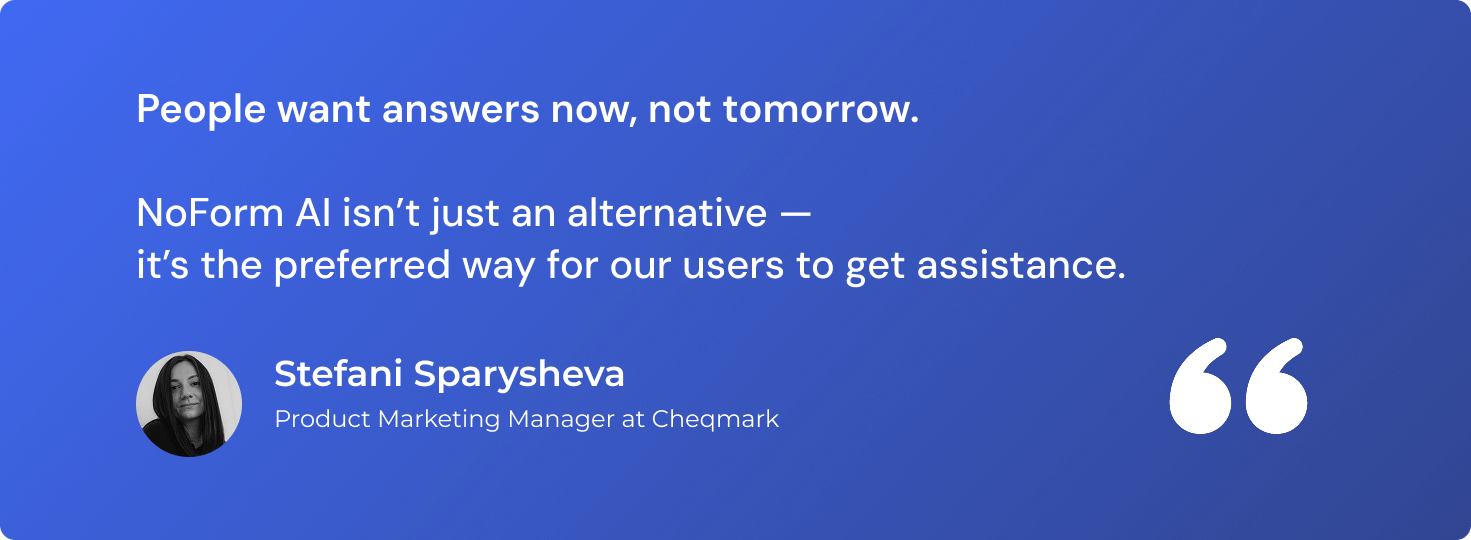
With AI agents, your website never sleeps. The assistant greets every visitor instantly, answers key questions, qualifies intent, and gathers additional context while your team's offline.
Now connect that to your email signature. Every email you send includes a clickable CTA — “Chat with us,” “Book a call,” “Explore pricing.” Each click from your email drives traffic to a page where your AI agent continues the conversation — turning inbox activity into meaningful engagement.
Real-world support example
A customer clicks "Need help?" in your support team's email signature. Instead of waiting for a ticket response, they chat immediately with an AI assistant that assesses urgency, gathers details, and routes complex issues to specialists — qualifying the conversation before it even reaches your team.
Real-world sales example
A prospect clicks "See pricing" from your sales rep's follow-up email. The AI conversation asks smart questions to identify their company size, use case, and timeline — qualifying their readiness and booking a demo with the right specialist.
This is AI-powered engagement in action: continuous, personal, and efficient.
AI-driven hyper-personalization (from email click to conversation)
Personalization doesn’t end with a name in an email — it continues after the click.
A branded email signature introduces consistency: your logo, role, and tone are part of every message. When a recipient clicks a link and visits your website, your AI assistant extends that familiarity by speaking in the same brand voice. It recognizes visitor intent, tailors responses, and guides each person toward relevant answers or actions.

According to McKinsey, companies that personalize at scale can see conversion lifts of up to 30%. The key is maintaining that continuity — from your email signature to your site chat — so every interaction feels connected and intentional.
That’s AI personalization in real motion: your branding sparks the interest, and AI engagement deepens it. Tools like MySignature make this effortless. Its AI-powered features automatically suggest polished layouts, adjust styling, and ensure every team member’s signature looks professional and cohesive. With just one click, you can unify your branding across emails, saving time while making every message feel intentional and on-brand.
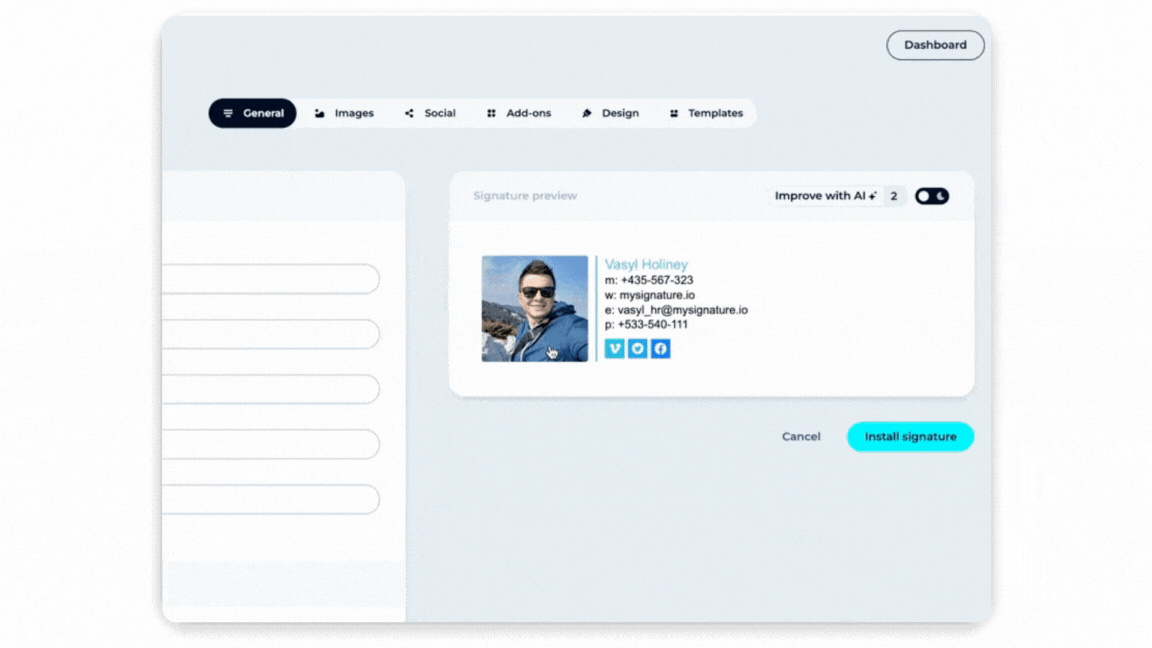
Replace static forms with conversational AI
The contact form had a good run. But it waits — and waiting kills momentum.
Traditional forms have a 70%+ abandonment rate. Visitors land on your page with intent, see a wall of fields, and leave. Even those who complete forms often provide minimal information, leaving your team to qualify them from scratch.
Conversational AI for customer engagement replaces passive forms with proactive dialogue. When someone lands on your site, the AI agent starts the conversation right away, answering questions, collecting additional information, and identifying intent in real time.
Think of the flow: a recipient sees your email signature banner, clicks, and within seconds is chatting with a helpful assistant — not filling in boxes. It feels natural, personal, and frictionless.
The AI asks smart questions, gathering information progressively rather than all at once. It can identify whether someone needs immediate support, wants to schedule a call, or is just exploring options. That's a qualification happening in real-time, during the conversation itself.
Tools like NoForm AI and similar platforms specialize in this exact use case — turning website visits into two-way conversations that feel human while capturing structured data your team can act on.

That's how brands today turn an ordinary email signature click into a conversation that's already qualified — with context, intent, and next steps identified before any human gets involved.
Measuring the ROI of AI customer engagement
The key question most businesses ask is: how do you prove AI's impact on your bottom line?
Measuring the ROI of conversational AI for customer engagement requires tracking specific KPIs that demonstrate tangible business value. The most common KPIs include:
- Customer satisfaction (CSAT). Track improvements in customer satisfaction ratings after implementing AI-powered conversational tools. Higher CSAT often correlates with faster response times and more accurate first-contact resolution.
- Net Promoter Score (NPS). Measure how likely customers are to recommend your brand. AI that provides consistent, helpful experiences typically improves NPS by 10-15 points.
- Conversion rate improvements. Monitor increases in lead conversion rates from chat to booked calls, demos, or purchases. Most businesses see higher conversion rates with conversational AI compared to static forms.
- Qualified engagement rate. Track how many conversations successfully identify visitor intent and capture actionable information (company size, use case, timeline, urgency level, decision-making authority) compared to traditional form submissions. This reveals how well AI is doing its qualification work.
- Response time reduction. Measure the difference between human-only response times and AI-assisted engagement. Instant responses typically increase engagement rates by 40-60%.
- Customer acquisition cost (CAC). Calculate the cost of acquiring new customers before and after implementing conversational AI. Most companies see a 20-30% reduction in CAC as AI handles initial qualification.
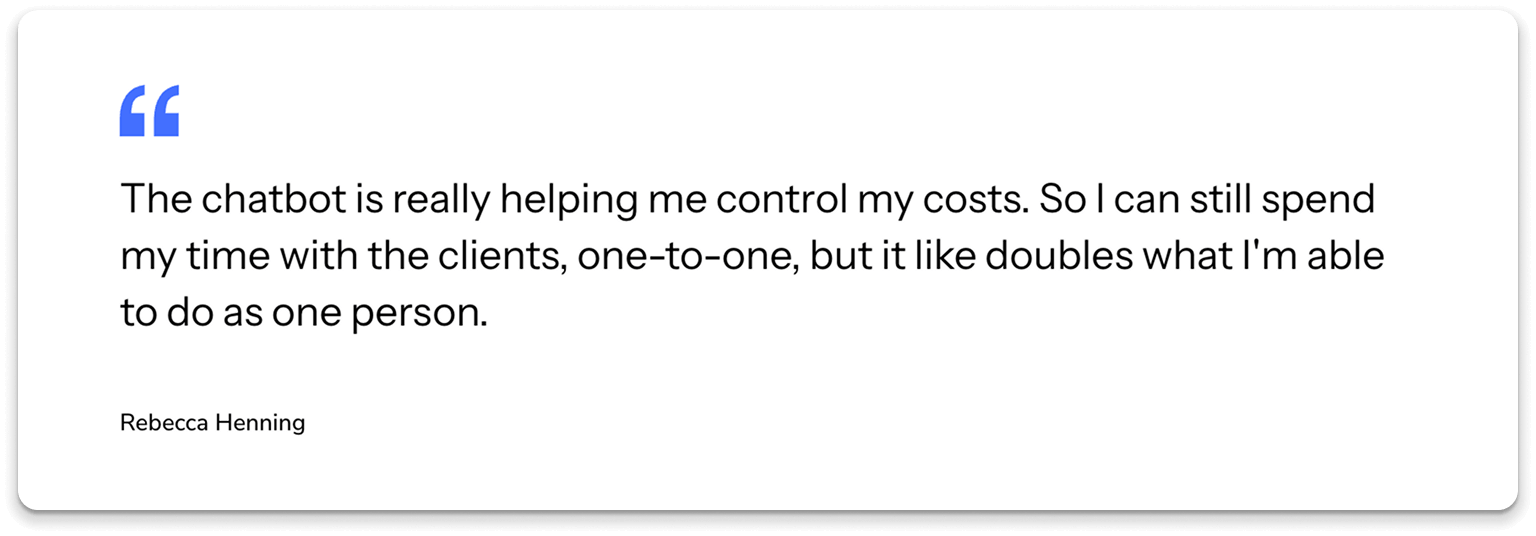
Teams using AI assistants report:
- 28% faster ticket resolution
- 20-40% reduction in service costs
- 30% reduction in lead acquisition costs
- Higher team satisfaction as reps focus on closing rather than qualifying
Challenges and best practices for AI customer engagement
Using AI chatbots for customer engagement comes with its own challenges — mainly tone, trust, and data handling.
Maintaining brand voice consistency
Your email signature sets tone expectations. Your conversational AI must match them.
“You may be thinking that AI-powered personal branding sounds like an oxymoron. How could AI replace the vulnerability of a personal brand? The answer is it doesn’t. Leveraging AI, despite what many believe, is not about replacing humans. It’s about optimizing your efforts.”
— Melanie Borden, CEO & Founder of The Borden Group
Tone consistency is crucial. Just like you shape your brand voice in your email signature, your AI for personal branding should carry that same personality across your website. A mismatch — too robotic or overly casual — can erode trust.
Ensuring AI accuracy
AI can hallucinate or provide outdated information, which damages credibility fast. The solution is limiting AI responses to verified knowledge bases rather than allowing open-ended answers.
Regularly updating AI training data with current product information, pricing, and policies keeps responses accurate.
Finally, monitoring conversation logs for inaccuracies and retraining the AI based on real interactions ensures continuous improvement.
Data privacy and compliance
Data privacy is another pillar. Ensure your AI tools comply with GDPR, CCPA, and other regulations, especially when collecting business information via chat. Transparency reassures visitors and strengthens brand credibility.
Configure your conversational AI to collect only the information necessary for your business purposes. Don't ask for data you won't use.
Summing up
Customer engagement starts with an email—but it doesn't have to end there.
By connecting professional, branded email signatures with conversational AI, your business can create a seamless, intelligent customer experience that engages, qualifies, and converts in real time.
AI for customer engagement is the next evolution in digital communication — transforming every click, chat, and interaction into an opportunity to build trust and drive growth.
Turn every email into an opportunity, every click into a conversation, and every conversation into qualified engagement that moves your business forward — whether that means closing a sale, resolving an issue, or deepening a relationship. With tools like MySignature, you can ensure that every email your team sends is not just professional, but also a consistent part of this intelligent, AI-powered engagement journey.
